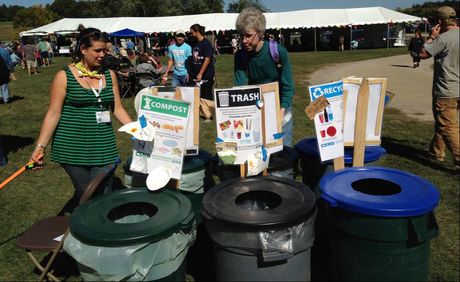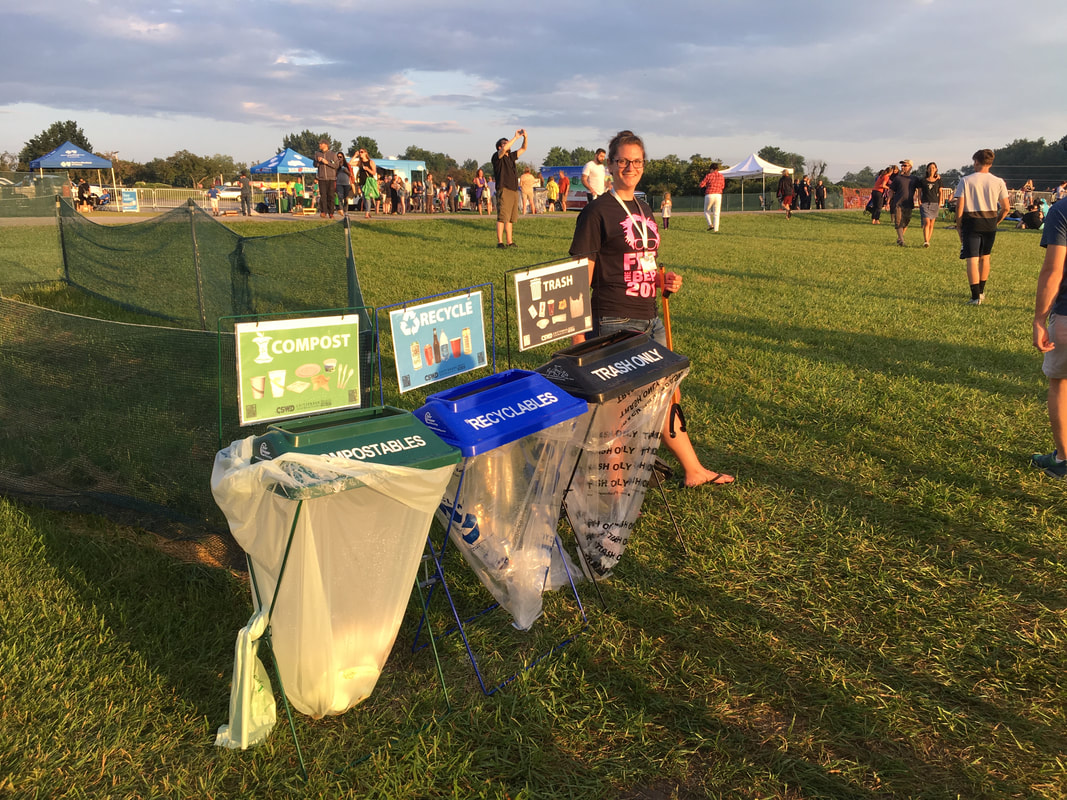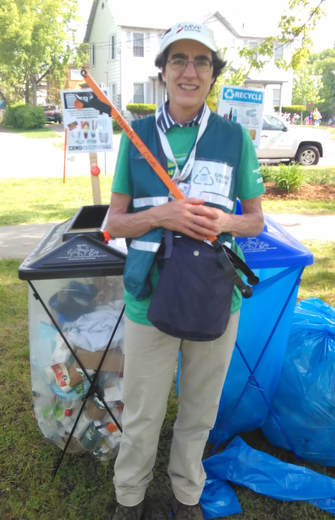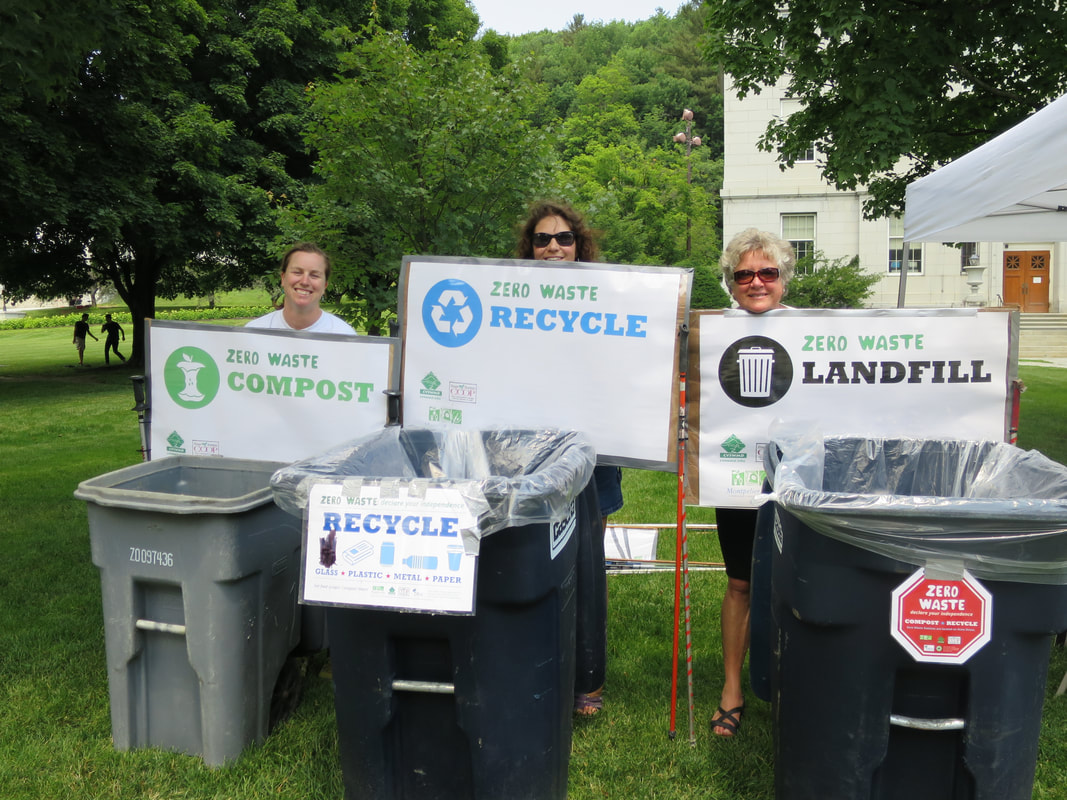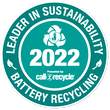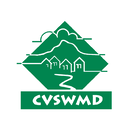Anatomy of a Sorting Station
|
Types of sorting stations:
Determine what type of stations you will have based on the types of waste that your event will be generating. Connect with your vendors (or caterer) to learn about each cup/plate/spoon/bowl/napkin that will be used for serving. Each station will need collection bins based on the items you are collecting:
Sorting Bins/Cans: CVSWMD has a variety of sorting stations options complete with signage, FREE for your one-time event. Consistency is key. It is important that every sorting station at your event looks the same to avoid confusion for your event guests. Same bins, same order at every location.
Number of stations: Use this simple formula for smaller events—> 1 Zero Waste Station/25 guests. For larger events contact your local hauler. Mapping: Once you have determined the number of sorting stations, you will need to map out their locations within the venue. Sorting stations need to be set up in key locations throughout your event venue, such as by entrances, exits, and eating areas. This will help you later in determining the number of volunteers/staff you'll want to have. Variables are:
|
Supplies:
Keep all your supplies stocked at one central location, or distribute enough at each sorting station. Clearly label your bin or bucket with contents and contact info if misplaced. Bags: Color-coded bags help guests properly sort their discards. They also help volunteers collect bags and bring them to the correct hauling destinations. Consider using blue bags for recyclables, green or clear bags for compost, and black bags for landfill. (OR clear, clear, and black) Signs: Sorting signs at each station will help guest quickly and correctly sort their items.
Click on this link to download printable 8.5 x 11" signs! Other ZW Supplies:
Staff & Volunteers:
Don't forget! The most important part of an effective sorting station is having someone PRESENT to monitor and educate! This helps prevent contaminated content (which will not be accepted). If staffing or volunteers are not an option - provide clear signage and educational images to help prevent contamination. |
Recruiting Volunteers
|
Trash? NO! Think "Sorting Station":
Contamination happens easily: all it takes is one person to put any item in the wrong bin. That's why having on-site volunteer monitors to assist event-goers is vital to pulling off recycling and composting at events. And no longer do you have just trash containers. Create Sorting Stations featuring recycling, food scraps and trash. Prevent Contamination! Each sorting station should feature a trained volunteer who assists attendees, ensures there is no contamination between bins, and helps increase public awareness. Your team of volunteers could include: • Local student groups or sports teams • Local businesses • Community groups or like-minded organizations 1) Determine how many volunteers you need. Create a map of your event for determining number and location of sorting stations, and identify where and when people need to be assigned. 2) Recruit Staff/Volunteers. Reach out to your community groups or local businesses. Use social media, Front Porch Forum, newspapers, your email lists and website, to get the word out. Create a free sign up form using Google, or your own website platform to create a database of interested volunteers. 3) Train and Schedule. Now it's time to get a commitment. Let your volunteers know when and how long they will be required to work for, and what will be provided to them (free ticket, snacks, t-shirt, training, etc). Set-up a training date to go over your venue map, schedule shifts and delegate roles, and work out all the details of your event with your team. |
